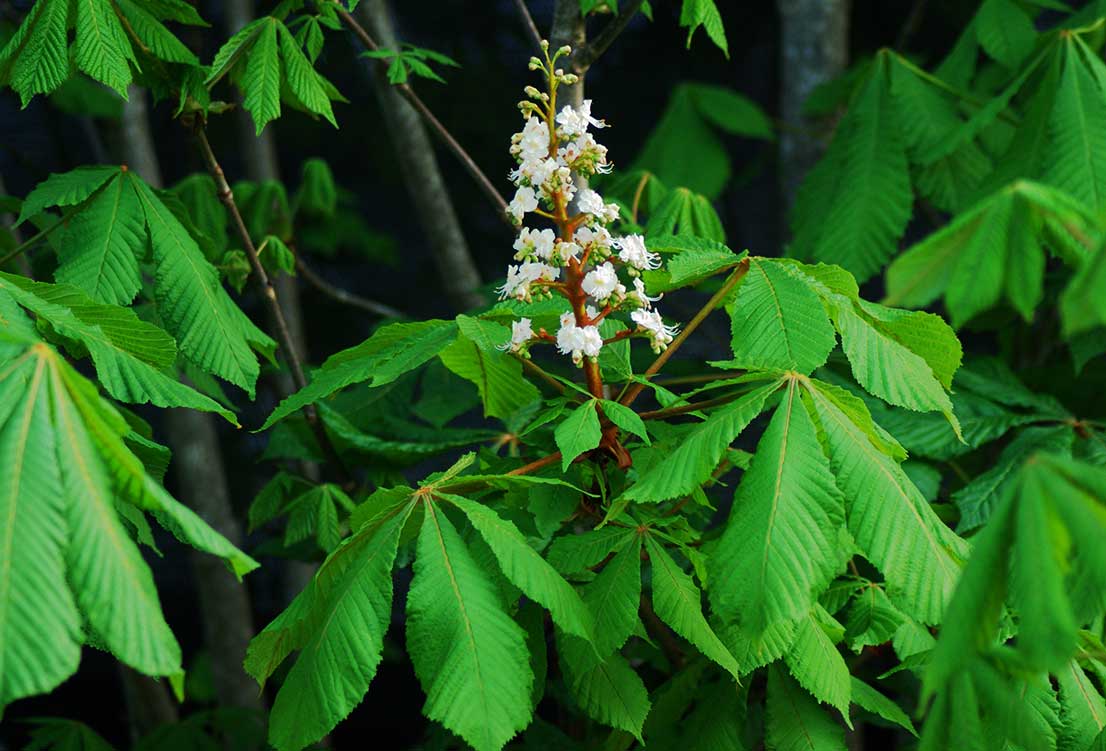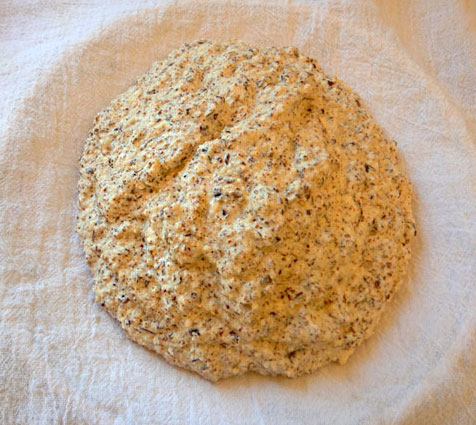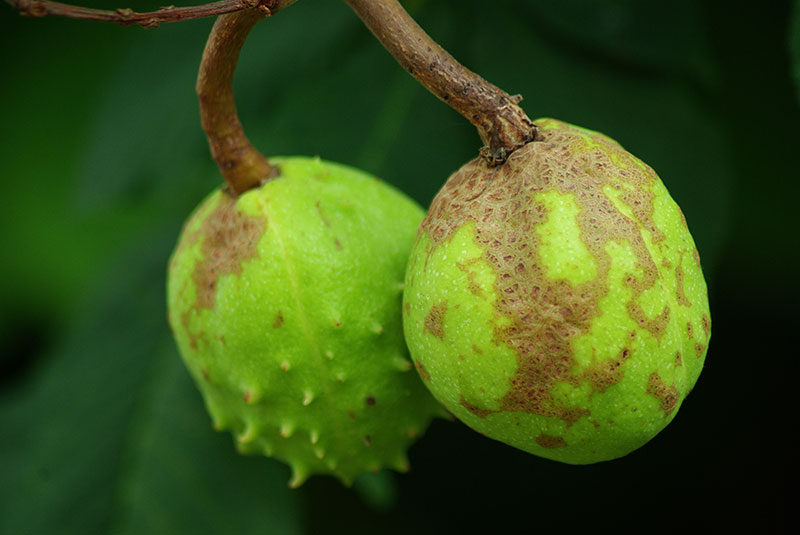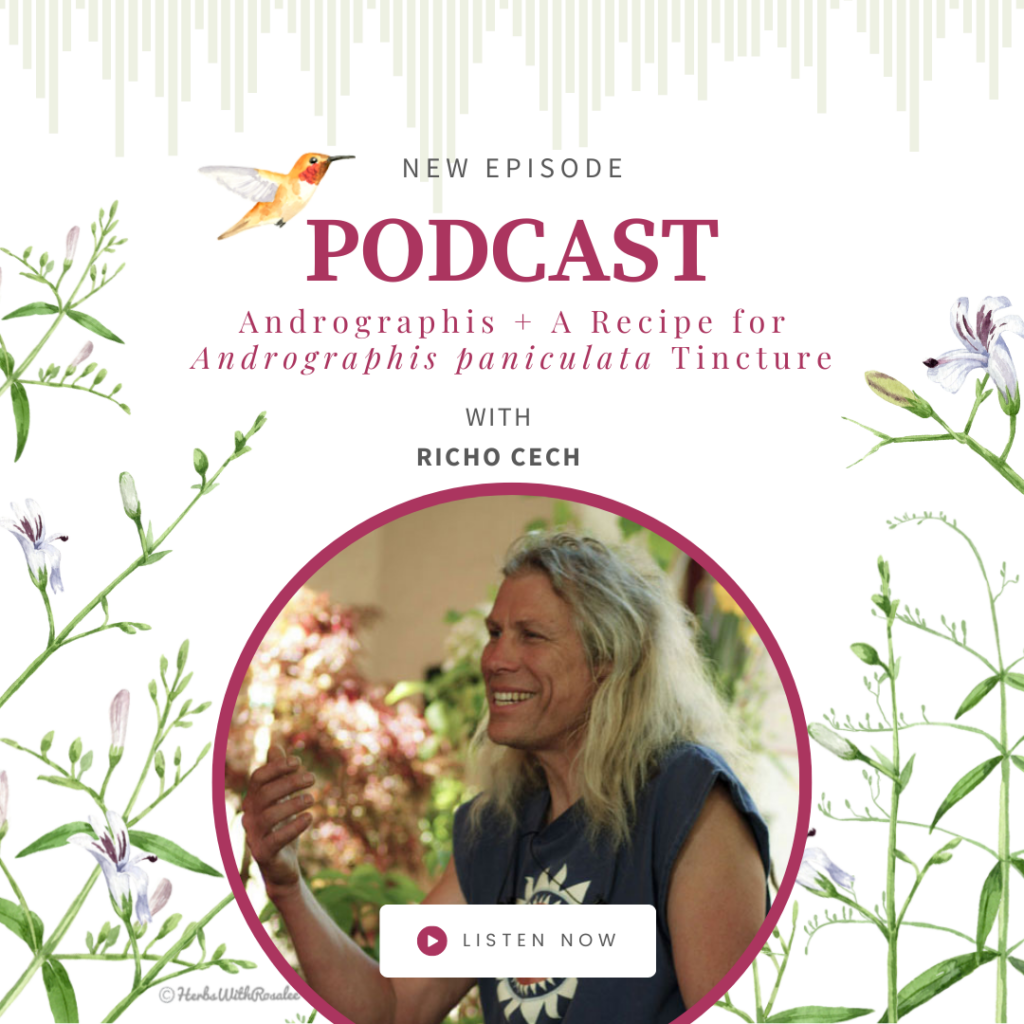

For the home herbalist, the easiest and safest way to use the plant is by making a poultice of the seeds.
RICHO CECH
On the walk home from school, there on the corner of Hutchinson and River, stood a stately tree with heavy arms holding aloft a rounded crown of green, an English Horse Chestnut tree that made in mid-spring a fantastic display of upright, conical flower clusters and in fall, dropped spiny balls that split apart to reveal the shiny, mahogany-colored seeds we called buckeyes. Ginny was wearing shorts, and as the more athletic of us two, was elected to climb up and see if she could shake down some seed balls, which didn’t tend to fall on their own until after frost. Her tennies gripped the light bark of the tree as she scrabbled, ignoring the scratches to her knobby knees.
“Ginny knows how to shimmy!” I called out. “Quit trying to make a rhyme and give me a leg up,” she winced, reaching for the lowest branch. I stood below and held both of my palms up for her to step on, and thus assisted she swung herself onto the limb. She called down, “I’m getting the willies!” “Just shake,” I exhorted, and she did. Several of the treasured orbs came bouncing down onto the grass. I started to pry one apart, soon to be interrupted by a gasping call, “Help!” I looked up to find Ginny hanging from the branch, her arms stretched as straight as clothespins. Some kids called her “Skinny Ginny” but I never did, because I was her friend. She didn’t want to drop — it was too far. So I stood and extended my palms as before, to give her a boost down. Just then she slipped off the limb and came crashing down on me, and we both ended up flat in the grass, unhurt and laughing. The nuts jumped out of the husk when we whacked them on the sidewalk. I put one in my pocket, but kept my hand there, massaging the soothing surface with my thumb. Buckeyes were good luck, everybody knew that. These treasures sometimes accompanied me to school, but eventually ended up rolling loudly in the bottom of my socks drawer, or bouncing in the laundry. My mom didn’t mind. Little did I then know how conspicuously this tree would serve me later in life.
The genus Aesculus has birthed a number of species, including the Ohio Buckeye (Aesculus glabra), which is native to the Midwestern states; the California Horse Chestnut (Aesculus californica) which festoons with showy white flowers, in-season, the dry hills of central California; and the English Horse Chestnut (Aesculus hippocastanum), which is the most highly valued in terms of herbal medicine. Many herbs can be employed to help thin the blood, reduce LDL cholesterol, fight arterial plaque, improve circulation and/or tonify veins: Andrographis, Burdock, Calendula, Melilot, Garlic, Red Clover, Stoneroot and Witch Hazel to name a few. But as a simple, English Horse Chestnut, containing the triterpenoid saponin aescin, is the most effective vasoconstrictor to provide relief from spider veins, varicose veins, and complications caused by varicosities. Taken internally, the seed extract (used at extremely low dosage, or when divested of the toxic coumarin glycoside aesculin, used at standard dosages) will prove antiinflammatory to veins, reduce leakage into other tissues, repair the one-way valves that keep blood moving from the feet up to the heart, and strengthen the cell membrane of the capillaries. Applied externally, Horse Chestnut may be expected to shrink varicosities and reduce spider veins wherever it is applied. [1]
For the home herbalist, the easiest and safest way to use the plant is by making a poultice of the seeds. When this is done, the herb may be applied directly to the affected area without concern for toxicity. Moist heat is most often prescribed for treatment of inflamed varicosities, and how much more effective when the moist heat is delivered by way of ground-up horse chestnuts? The results will speak for themselves.
Here’s an easy recipe for making a hot poultice out of the seeds of English Horse Chestnut (Aesculus hippocastanum):
In a blender, combine one cup of boiling water with 2 cups of English Horse Chestnuts. The commercial blender will munch up the nuts without chopping. When using a small home blender, snip the nuts into pieces prior to blending, using pruning shears. Blend until a consistent mash is obtained.
On a dinner plate, stretch a single layer of thin cotton cloth (or similar material — a thin white dishtowel, a large handkerchief or a cotton diaper, well-laundered, will work fine) and pour half of the mash onto the cloth (as pictured). The other half may be reserved for the next poulticing session.

Say the varicose veins are on the back of the calf. Recline the patient on his/her back and place a long bath towel under the calf, then place the plate with the poultice under the affected area, and lower the calf down into the bare hot mash. The mash should be hot but not burning hot (maximum temp 105° F = 41° C). Slide the plate out and stretch the cloth up around the leg, forming the mash to the affected area, then wrap the towel up around the leg to keep the poultice warm and in place.
A hot water bottle may be placed under the towel to maintain consistent heat. Allow this to work for at least an hour, overnight if possible, then remove the poultice and rub the leg with the towel.
Unlike many poultices, the horse chestnut seed poultice is not messy. It makes a kind of dough which can easily be peeled off. Compost the dough and wash the cloth. As with most herbal therapies, good results require consistent and ongoing application. I have seen an extreme case of thrombophlebitis (ultrasound had ruled out deep-vein thrombosis) resolved in 10 days of consistent application of the Horse Chestnut Seed poultice, rendered twice daily. Unused dough may be stored for 24 hours and reheated by placing on a cloth on a plate in a low oven (make sure the whole thing doesn’t catch fire) before application. I do not suggest killing it in a microwave.
Trees — they make our lives most pleasant with apples and grateful shade. Their green is a balm to our eyes, our nerves are calmed by the fragrance of a pine woods, and buckeyes — buckeyes are good luck!
[1] See my book “Making Plant Medicine” for a thorough examination of Horse Chestnut, including the parts used, recipes for tincture, infused oil, salve and cream, the practical uses, dosage and contraindications. — Richo




Richo~
The Horse Chestnut start I received from you at least ten years ago is now making babies of its own!
Very interesting process how the nut remains above the ground!
Are you peeling the nuts before blending?
Hello Lana,
No, I am blending them whole.
r
Lovely story. Premonitions we have as children play out later in fabulous ways. I wish I could go back and be with me from birth and re-experience it all from the perspective I have now. I think there are buckeyes in the park a couple of minutes from where I live in Louisiana. Gotta go look. Thanks Richo!